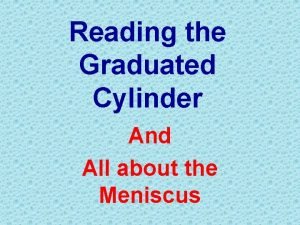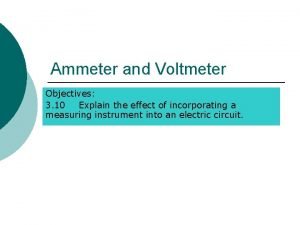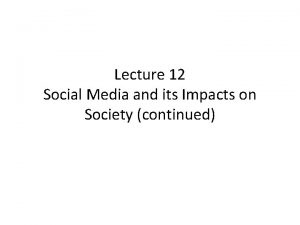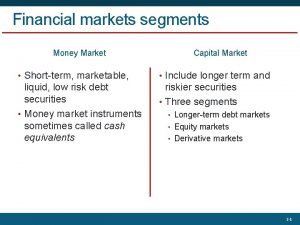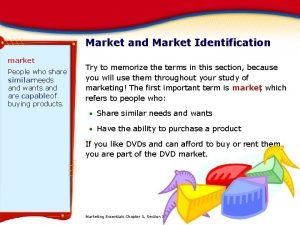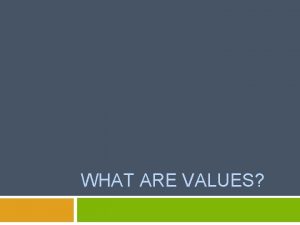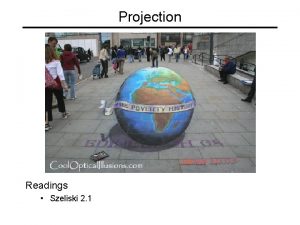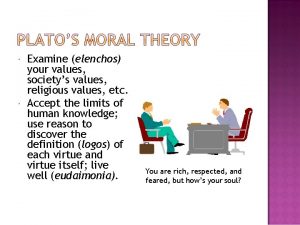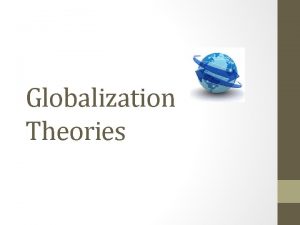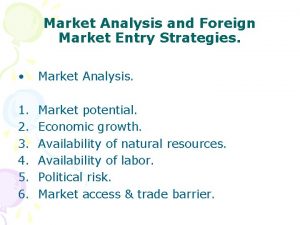Lecture 5 Market Values and Social Values Readings



























- Slides: 27

Lecture 5 Market Values and Social Values Readings: Chapter 5

Recent Event • Several years ago, Newfoundland announced that gasoline prices would be regulated by the government. • The Newfoundland government judges that market prices are not meeting Newfoundland’s social objectives. • They believe regulated prices will serve the interests of Newfoundland society better than unregulated market prices.

What questions does this raise? • This action by the Newfoundland government is unusual. Most governments prefer to let the market determine the price for commodities. • Q: Why do governments usually prefer to leave market prices unregulated? • A: Competitive markets generate prices that lead to an efficient allocation of societies scarce resources.

What is efficiency? Economists understand efficiency to be a social outcome in which society’s scarce resources are used to produce the goods and services that people value the most. To find efficient social outcome recall marginal analysis.

How is an efficient social outcome found? Marginal benefit • is the benefit that a person receives from consuming one more unit of a good or service. • Measured as the maximum amount that a person is willing to give up for one additional unit. Principle of decreasing marginal benefit: • Marginal benefit decreases as consumption increases.

How is an efficient social outcome found? Marginal cost • is the opportunity cost of producing one more unit of a good or service. • Measured as the value of the best alternative forgone. Principle of increasing marginal cost: • Marginal cost increases as the quantity produced increases.

Efficiency and Inefficiency • To determine whether an outcome is efficient requires comparison of the marginal cost (MC) and marginal benefits (MB). • Resources are efficiently utilized when MB = MC • If MB>MC then increase output. • If MB<MC then decrease output.

Marginal cost and marginal benefit (dollars worth of goods and services) The Efficient Quantity of Pizza 25 Pizza valued more highly than it costs: Increase production MC Pizza costs more than it is valued: Decrease production 20 15 10 5 0 Efficient quantity of pizza 5 10 15 MB 20 Quantity (thousands of pizzas per day)

How are value and price related? • For economists, the value of one more unit of a good or service is the same thing as its marginal benefit. • Marginal benefit can be expressed as the maximum price people are willing to pay for an additional unit. • Willingness to pay determines demand.

Demand, Willingness to Pay, and Marginal Benefit Price (dollars per pizza) 25 Price determines quantity demanded 20 15 5 Quantity of pizzas demanded at $15 a pizza 0 5 10 D 10 15 20 Quantity (thousands of pizzas per day)

Demand, Willingness to Pay, and Marginal Benefit Quantity determines willingness to pay Price (dollars per pizza) 25 20 15 10 5 Maximum price willingly paid for the 10, 000 th pizza 0 5 D = MB 10 15 20 Quantity (thousands of pizzas per day)

Do market prices reflect the total value of a good? • Most goods purchased in the market are valued more highly than the market price. • Most people pay less for the good than they value it, creating a consumer surplus. Consumer surplus is the value of a good minus the price paid for it.

Price (dollars per slice) A Consumer’s Demand Consumer Surplus Consumer surplus 2. 50 2. 00 1. 50 Lisa’s consumer surplus from the 10 th pizza Market price Total 1. 00 benefit Amount paid 0. 50 0 10 20 30 D 40 Quantity (slices of pizzas per week)

What is marginal cost? The cost of producing one more unit of a good or service is its marginal cost. • For a firm, it is the marginal value of the resources used in the production of one more unit applied to the next best activity. • Therefore, the marginal cost is the minimum price required by producers to produce another unit of output.

What does Marginal Cost look like? • The supply curve in a competitive industry can also be interpreted as the curve which gives the minimum price required to produce a certain level of output. A supply curve is a marginal cost curve.

Price (dollars per pizza) Supply, Minimum Supply Price, and Marginal Cost 25 Price determines quantity supplied S 20 15 10 Quantity of pizzas supplied at $15 a pizza 5 0 50 100 150 200 Quantity (thousands of pizzas per day)

Price (dollars per pizza) Supply, Minimum Supply Price, and Marginal Cost S = MC 25 Minimum supply price for 10, 000 th pizza 20 15 10 Quantity determines minimum supply price 5 0 5 10 15 20 Quantity (thousands of pizzas per day)

Producer Surplus Producer surplus is the value of a good minus the opportunity cost of producing it. If a firm sells something for more that it costs to produce, the firm obtains a producer surplus.

Price (dollars per pizza) A Producer’s Supply and Producer Surplus Max’s producer surplus from the 50 th pizza 25 20 S = MC Market price Producer surplus 15 10 5 0 Total revenue 50 100 Cost of production 150 200 Quantity (pizzas per day)

What does the market do? • We already know that markets produce equilibrium prices. • When demand exceeds supply, the price will increase • When demand is less than supply, the price will decrease • An equilibrium price emerges that determines what society produces, how much society produces, and who gets society’s product.

Price (dollars per pizza) An Efficient Market for Pizza 25 Consumer surplus S Marginal cost (opportunity cost) of pizza 20 15 Consumer’s Marginal benefit (value) of pizza 10 expenditure = Producer Efficient quantity 5 Producer’s surplus D of pizzas revenue 0 5 10 15 20 Quantity (thousands of pizzas per day)

Are market prices useful social values? At the competitive equilibrium, the marginal benefit to consumers of last unit purchased equals the marginal cost to producers of supplying that last unit. Resources are being used efficiently.

Price (dollars per pizza) An Efficient Market for Pizza 25 Consumer surplus S = MC Marginal cost (opportunity cost) of pizza 20 15 Marginal benefit (value) of pizza 10 5 0 Producer surplus 5 Efficient quantity of pizzas 10 15 20 D = MB Quantity (thousands of pizzas per day)

Why is this efficient? • At the competitive equilibrium, the sum of consumer surplus and producer surplus is maximized. • By maximizing this net benefit, the total benefit is maximized. • Any alternative application of society’s scarce resources would reduce the net benefit and hence the total benefit.

Price (dollars per pizza) Reducing Resource Used in Pizza Production S Net Loss 25 20 15 10 5 0 D 5 10 15 20 Quantity (thousands of pizzas per day)

The Invisible Hand Adam Smith first proposed the idea that competitive markets allocate resources efficiently in his 1776 book, The Wealth of Nations. Each participant in a competitive market is “led by an invisible hand to promote an end [the efficient use of resources] which was no part of his intention. ”

Implications • Competitive markets generally do a good job of efficiently allocating resources. • Governments (like Newfoundland) have, from time to time, intervened and impose different values. • In the next lecture we examine how governments can intervene to impose different values on the market and what the social implications of such intervention can be.
 Market segmentation market targeting and market positioning
Market segmentation market targeting and market positioning Environmental management: readings and cases
Environmental management: readings and cases 01:640:244 lecture notes - lecture 15: plat, idah, farad
01:640:244 lecture notes - lecture 15: plat, idah, farad Leader challenger follower nicher
Leader challenger follower nicher Types of readers
Types of readers Parts of theodolite
Parts of theodolite Conclusion of vernier caliper
Conclusion of vernier caliper Keratometer readings
Keratometer readings 312زبان عشق
312زبان عشق Lel meter readings
Lel meter readings Rad 57 readings
Rad 57 readings Normal blood gas
Normal blood gas Reading a graduated cylinder
Reading a graduated cylinder Responsive reading christmas
Responsive reading christmas Responsive prayer of thanksgiving
Responsive prayer of thanksgiving Jcu maps
Jcu maps How to read ammeter
How to read ammeter Normal ecg readings
Normal ecg readings Social thinking and social influence
Social thinking and social influence Social thinking social influence social relations
Social thinking social influence social relations Machiavellian personality
Machiavellian personality Terminal values and instrumental values
Terminal values and instrumental values Social psychology lecture
Social psychology lecture Lecture about social media
Lecture about social media Primary target market and secondary target market
Primary target market and secondary target market Participants in the business buying process
Participants in the business buying process Bond equivalent yield formula
Bond equivalent yield formula Identification marketing
Identification marketing












